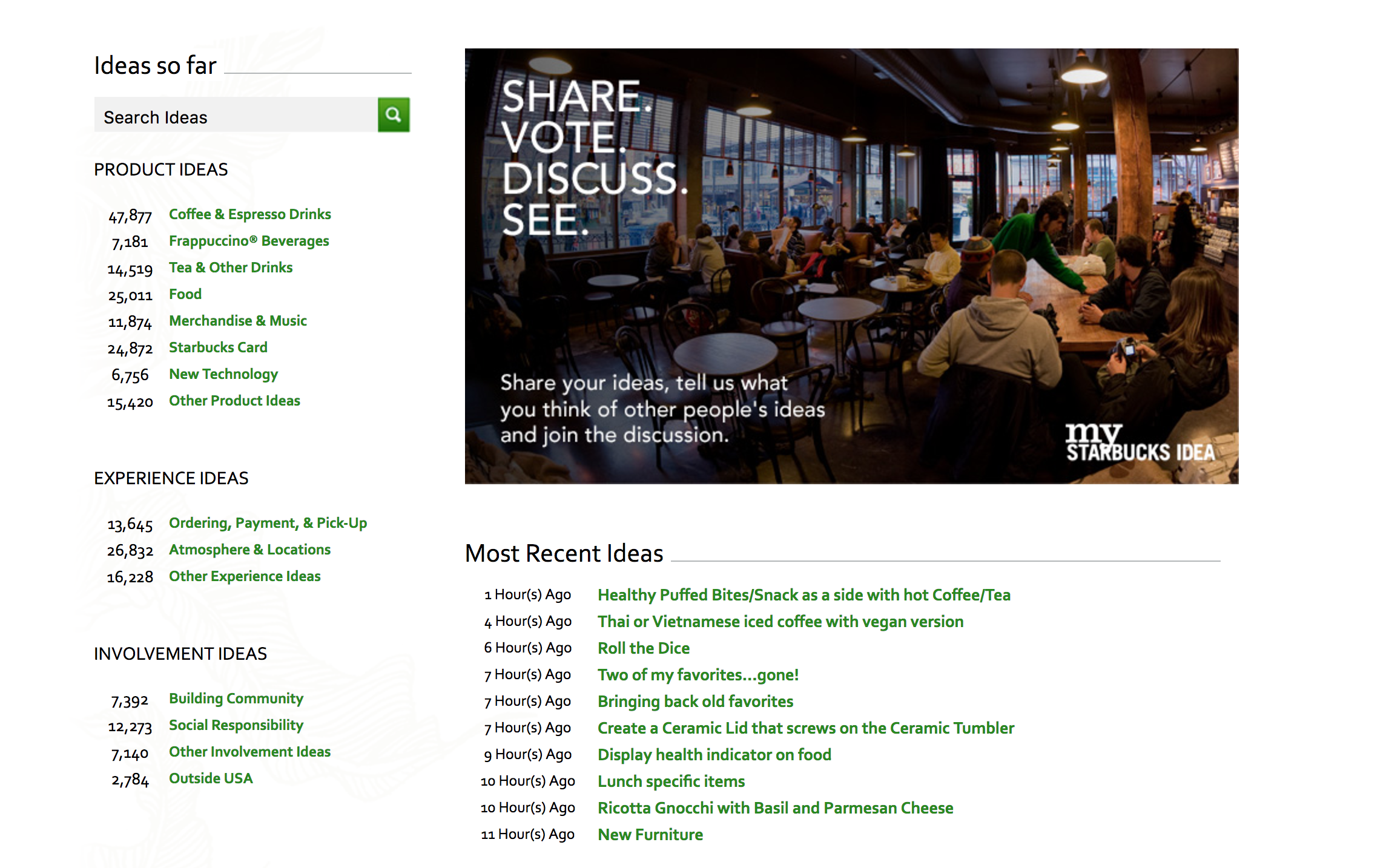
What you can (and can’t) learn from Starbuck’s customer service
The fact that Starbucks is a money-making machine is known around the world. The same is true for a company that has one of the most refined business models in the sector or knows how to redefine the rules of a stagnant market.
The way customer service works is something that usually doesn’t get much attention. In this post we’ll look into it and see what can be learned from one of the giants as well as what they should improve.
My Starbucks Idea and VoC (Voice of the Customer)
The first thing that we need to emphasize is the importance that this franchise gives to the voice of the consumer. It might be one of the companies that values customer feedback most, so much so that they created a platform on their own domain to consolidate all proposals and potential improvements for the store and the franchise. This platform, which we could define as crowd-sourcing, was created as My Starbucks Idea in 2008, so we see brand anticipation in many ways.
How does it work?
My Starbucks Idea is a portal where customers from the community register to contribute their ideas on three fundamental topics.
- Product: drinks, food, merchandising
- Experience: from payment methods to coffee shop environment
- Other ideas: especially related to the community itself and corporate social responsibility
Registered users can open threads and make suggestions or criticisms; if you add up the numbers from the screenshot below, you’ll see there are more than 250,000 open threads. For its part, the rest of the community votes and debates. Naturally, the results aren’t binding nor do they imply that the proposals will be implemented, but it’s a great form of customer service that we might even say is predictive.
Starbucks itself encourages participation by highlighting the best ideas on the home page and, more interestingly, those that are already being implemented. Another trick to mobilize your audience is to create a monthly ranking of “top scorers”, which is an intriguing move since we’re up against one of the quintessential ‘love brands’. The main benefits they’ll receive are:
- Omnichannel marketing: Within Starbuck’s omnichannel strategy, this platform is ideal to stimulate the Social and Web platforms.
- Generation of the prosumer figure: thousands of users that proactively generate content and debate.
- Social proof: an entire community that recommends and discusses topics, always with the brand at the axis of communication.
- Generation of leads: Naturally, users need to have an account to be able to comment, propose ideas, and vote.
- Quantifiable improvement proposals: before deciding to make an improvement, they already know approximately what impact it will have.
- Trend identification: critical for marketing at the strategic level.
On the other hand, it has its risks, mainly the fact that someone will have to face users who don’t intend to help but just want to make noise. There is also the added challenge of maintaining and moderating the portal.
Moreover, let’s highlight the fact that it’s only available in the US, so the opinions and decisions that come out are largely biased. We have to keep in mind that it is a multinational company, after all.
What about the rest of Starbuck’s customer service?
It’s clear that My Starbucks Idea is a great bet, but what else does Starbuck’s customer service do? I would like to point out that, in online terms, it is not as accessible as one would expect as a user: After looking at their extensive menu, you then have to look for the link at the footer of the page. This might seem trivial but it ends up being important when you’ve been searching for a while, especially if you’re dissatisfied.
Once we click the link and access the page, we find a FAQ page and a search engine that takes up most of the space, though you can also browse by topic. On a more advanced level, if we go to the “contact us” section we find that there are 10 different links to access corresponding forms and make queries according to the relevant department. Furthermore, there’s a phone number for customer service 7 days a week.
The part of the FAQs that generates so much work is the highlighted questions and forms in the second level of browsing, but Starbucks focuses on automating the answers as much as possible.
If they had wanted to give more personalized attention, it would’ve helped to have a livechat or a tool like Oct8ne included to be able to integrate other contact forms. It seems a little inconsistent that a company that cares this much about personalization, down to writing customers’ names on the cups, doesn’t do the same with their customer service.











